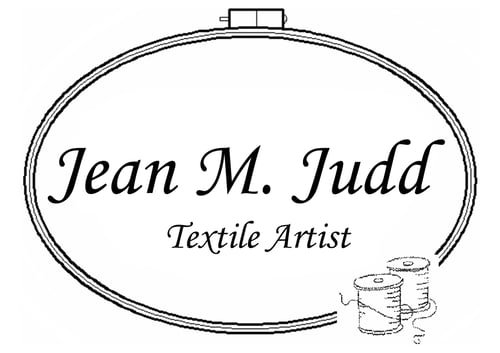See some of the steps Jean M. Judd uses in applying rust to textiles.
Rust Dyeing Process
In May of 2010 I decided to try a new process for applying rust pigmentation to some of my hand dyed fabrics: "I took a large piece of freezer paper, folded it, and cut out two abstract designs. I ironed it onto a piece of hand dyed fabric leaving a space between the two so I can cut them apart and use them separately for two new art quilts."
The freezer paper stencil in the foreground has already had the rust pigmentation process started. The paper and fabric are wet, and you can see the paper has pulled up from the fabric. The freezer paper in the background has not been done yet. The paper and fabric are still dry.
The following images and brief descriptions will illustrate the rust pigmentation process used for this specific technique.
Here I am sprinkling the iron filings onto the freezer paper. I have taped shut all but three of the holes on the bottle so I can control how much of the iron filings are put on the paper.
This is the first application of water to the paper. I will come back at regular intervals throughout the day and rewet the fabric using the spray bottle.
It is not a precise process. I do not want the fabric to dry out, but I also don't want it to be sitting in water either or the rust pigment will start to "run".
This image shows the iron filings starting to rust both on the paper and on the hand dyed fabric. This is just a couple of hours into the process.
The application process is complete at this point, and I am removing the freezer paper from the fabric. I did put the freezer paper into a large flat plastic bag and will try to reuse it again on a future rust dyeing experiment.
The fabric now needs to be rinsed to remove the rust filings. It will then be washed several times and dried before ironing. I can easily hand quilt all of my rusted fabrics. My process does not change the “hand” of the fabric and since vinegar is not used, there is no residual smell.
